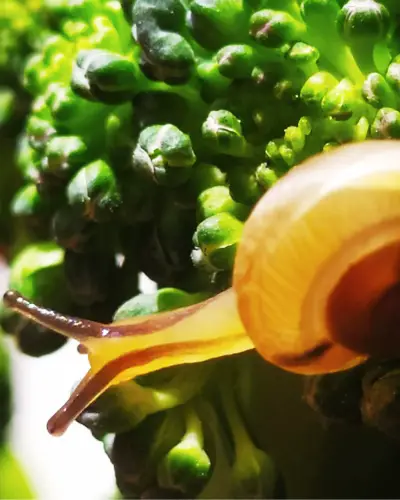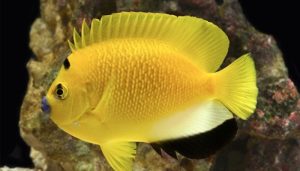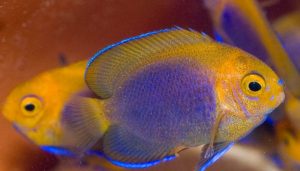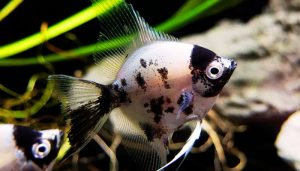Curious about mystery snail reproduction and how to care for their fascinating little eggs? These unique snails add charm to any aquarium, and watching their reproduction process can be both exciting and educational.
Unlike many other aquatic creatures, pomacea diffusa snails have a distinct breeding method, often leaving clusters of eggs above the waterline—a surprising sight for new owners!
Knowing the ins and outs of this process is essential if you want to encourage healthy breeding, understand the timing of hatching, or simply keep your aquarium clean and balanced.

In this guide, we’ll break down everything you need to know about the mystery snail reproduction process, from recognizing when your snails are ready to breed to providing the ideal environment for eggs to develop safely.
Dive into these expert care tips and prepare to witness the magic of snail reproduction firsthand!
Table of Contents
ToggleUnderstanding the Mystery Snail Reproduction Process
Mystery snails pomacea diffusa are widespread in freshwater aquariums due to their exciting behavior and striking appearance. When it comes to reproduction, Inca snails are capable of both sexual and asexual reproduction.
In sexual reproduction, the female snail will lay a clutch of eggs, and the male snail will fertilize them. The eggs are typically laid above the waterline in a clutch and will hatch after a couple of weeks.

As for asexual reproduction, Apple snails are also able to store sperm for later use, allowing them to fertilize their eggs without the need for a male partner. This enables them to reproduce without the presence of a male snail.
Mystery snails are known for being prolific breeders, so if you have them in your aquarium, it’s essential to be prepared for potential offspring. Additionally, ensuring proper water quality and plenty of vegetation in the tank will help support the reproduction process and the health of the snails.
Mystery Snail Breeding & Hatching Tips: Easy Steps to Breed Mystery Snails
How do you breed mystery snails in an aquarium? Mystery snails are very easy to breed. These snails are known for their vibrant colors and unique patterns, making them popular among aquarium enthusiasts. Here are some easy steps to reproduce mystery snails:
1. Identify Male and Female:
- Mystery snails are gonochoristic, meaning they have separate sexes. In order to breed them, you’ll need both a male and a female.
- Male mystery snails typically have a more tapered and elongated aperture (opening) than females. Females often have a rounder and more obvious aperture.
2. Set Up a Suitable Aquarium:
- Use a clean and well-maintained aquarium with stable water parameters. Apple snails prefer a temperature range of 68-82°F (20-28°C) and a pH between 7.0 and 8.0.
- Provide hiding places and ample vegetation to create a comfortable environment.
3. Feed a Balanced Diet:
- Ensure your mystery snails receive a balanced diet that includes high-quality commercial snail food, blanched vegetables (such as zucchini or blanched spinach), and calcium-rich supplements.
- Adequate calcium is crucial for shell development, especially during Mystery snail breeding.
4. Introduce Mating Opportunities:
- Place both the male and female mystery snails in the same tank. They will typically find each other and engage in mating behavior.
- Mating often involves the male climbing onto the back of the female and depositing sperm into the opening near her breathing pore.
5. Monitor Egg Clutches:
- Female Apple snails lay their eggs above the waterline to prevent drowning. The eggs are typically laid in clusters and are enclosed within a gelatinous material.
- Keep an eye on these egg clutches, eventually hatching into baby snails.
6. Incubate Eggs:
- Carefully remove the egg clutches from the aquarium and place them in a separate container with a damp paper towel or sponge.
- Maintain a high humidity level to prevent the eggs from drying out. Use a lid with small ventilation holes.
7. Wait for Hatching:
- Mystery snail eggs usually take about 2-4 weeks to hatch. During this time, monitor the humidity levels and keep the container in a warm location.
- Once the eggs hatch, you’ll notice tiny snails emerging.
8. Provide Adequate Nutrition for Babies:
- Crushed snail pellets or powdered fish food can serve as suitable food for the baby snails. Make sure the food is finely ground to accommodate their small size.
9. Transfer Juveniles to the Main Tank:
- Once the baby snails have grown large enough to handle the main tank conditions, you can carefully introduce them to the aquarium.
Remember that Inca snails are prolific breeders whose population can quickly increase depends on the temperature. If you want to avoid raising a large number of snails, consider removing or controlling the number of eggs to manage the population in your aquarium.
Male vs Female Mystery Snails
Male and Female Mystery Snails can be distinguished by examining their reproductive organs. The male Mystery Snail has a visible penis sheath located on the right side of its head, while the female has a reproductive pore located on the right side of its head.
In addition to their reproductive organs, male Mystery Snails tend to have a slightly longer and narrower aperture than females. Due to this sexual dimorphism, it is relatively easy to differentiate between male and female Mystery Snails.
Male Mystery Snails are often more active in behavior and may be seen exploring the tank more frequently than females. Conversely, females are typically more focused on finding suitable nesting sites and laying eggs.
Understanding these differences can be helpful for breeders looking to pair their freshwater Snails for reproduction and hobbyists who want to provide their snails with the best possible care.
Mystery Snail Mating Behavior
Mystery snails are known for their exciting mating behavior. When it’s time to mate, the snails often engage in a courtship dance, which involves circling and touching antennae.
This dance can last several hours and is a crucial part of mating. Once the male and female are ready to mate, the male will then transfer sperm to the female through a tube called a “love dart,” which is a unique part of the snail anatomy.
After mating, the female will lay eggs above the waterline, usually on the underside of vegetation or the aquarium glass. The eggs will hatch in about two to four weeks, and the newly hatched snails will drop into the water.
Observing mystery snail mating behavior can be a fascinating aspect of owning these unique creatures, and it’s always interesting to watch their intricate and elaborate courtship rituals.
How to Set Up an Aquarium for Breeding Mystery Snails
Creating an environment miming their natural habitat is essential to setting up an aquarium for breeding mystery snails.
Start by selecting a suitable tank with a capacity of at least 10 gallons, as mystery snails require ample space for reproduction. Use a substrate like peat moss or coconut fiber to provide a soft surface for the snails to lay their eggs.
Add plenty of live plants and driftwood to the tank to create hiding spots and surfaces for the snails to climb. Maintain a stable water temperature between 70-78°F and install a reliable filtration system to keep the water clean. Introduce at least one male and one female mystery snail to the tank and monitor their behavior closely.
Once the snails have laid their eggs, carefully transfer them to a separate hatching container to ensure the survival of the baby snails. Providing ideal conditions and close observation will increase the chances of successful breeding for mystery snails in the aquarium.
Remember to conduct regular maintenance and provide suitable conditions for the snails to breed successfully. With patience, you can enjoy the rewarding experience of producing snails in your aquarium.
Will mystery snails eat baby snails?
No, mystery snails do not typically eat their offspring or baby snails. Mystery snails are known for their peaceful nature and are generally not aggressive towards other snails, including their own young. They focus more on grazing algae, decaying plant matter, and other organic materials in the aquarium.
However, it’s worth noting that in some cases, if the tank is overcrowded or there is a food shortage, mystery snails may exhibit cannibalistic behavior.
This behavior is more likely to occur when the snails are under stress or when there is a lack of suitable food sources. To minimize the chances of cannibalism, ensure that the aquarium is spacious enough and provides sufficient food for all the snails.
If you’re concerned about the welfare of the baby snails, you can provide additional hiding spots and food sources in the tank to increase their chances of survival. Adding more plants and suitable surfaces for the baby snails to cling onto can help protect them from potential predation.
Mystery Snail and Tank Mates in Community Aquarium
Mystery snails (Pomacea bridgesii) are popular freshwater aquarium inhabitants known for their interesting behavior and attractive appearance. They are generally peaceful invertebrates and can be kept in a community aquarium with various fish species. However, there are some considerations to keep in mind when choosing tank mates for mystery snails:
Non-aggressive Fish:
- Opt for fish that are known to be peaceful and non-aggressive. Avoid species that may nip at the snail’s antennae or mantle.
Size Compatibility:
- Choose fish that need to be more significant to see the mystery snail as potential prey. Larger fish might accidentally harm or eat the snail.
Bottom Dwellers:
- Many bottom-dwelling fish make good tank mates for mystery snails. Corydoras catfish and small loaches are suitable companions occupying different areas of the tank.
Community Fish:
- Gouramis, tetras, Rasboras, and danios are good choices for mystery snail community aquariums. Ensure that the fish species you choose are compatible regarding water conditions and temperament.
Avoid Fin-Nipping Fish:
- Some fish, like specific barbs or aggressive tetras, may be prone to fin-nipping. This behavior can stress out the mystery snail, so avoiding such species is better.
Avoid Predatory Fish:
- Predatory fish or species known for eating smaller tank mates should be avoided. This includes some types of cichlids and larger predatory fish.
Monitor Interactions:
- Monitor the interactions between the mystery snail and other tank inhabitants. If you notice any aggressive behavior or harassment, it may be necessary to reevaluate the tank’s inhabitants.
Adequate Space:
- Ensure that your aquarium is appropriately sized for the number and size of fish and snails you plan to keep. Overcrowding can lead to stress and aggression.
Remember that individual fish may have unique personalities, so monitoring their behavior and making adjustments if necessary is crucial. Additionally, providing hiding spots, plants, and other structures in the aquarium can help create a more natural environment and reduce stress for all inhabitants. Always research the specific requirements of each species you plan to keep in your community aquarium.
Commonly Asked Questions about Mystery Snail Reproduction Process (FAQs)
Why is my mystery snail laying eggs?
Mystery snails lay eggs as part of their reproductive process. It’s a natural behavior indicating they are healthy and conditions in the aquarium are suitable for breeding.
Can mystery snails lay eggs without a mate?
No, mystery snails typically require a mate to lay fertilized eggs. They engage in copulation, and only then can the female deposit eggs that can potentially hatch.
Why won’t my mystery snail lay eggs?
Mystery snails may not lay eggs due to insufficient calcium, inadequate mating opportunities, or stress. Ensure proper conditions, nutrition, and a suitable environment for breeding Mystery snails.
Can mystery snails reproduce asexually?
No, mystery snails cannot reproduce asexually. They require a mate for sexual reproduction, engaging in copulation before the female can lay fertilized eggs.
Have you seen a clutch of snail eggs at any time?
A clutch of snail eggs is often observed as a gelatinous mass attached to surfaces in aquatic environments.
What color will my baby mystery snails be?
Baby mystery snails often have a translucent appearance, and their color becomes more distinct as they grow. The exact hue depends on the species and individual genetics.
Where do mystery snails lay their eggs?
Mystery snails lay their eggs above the water line, often on aquarium lids or tank walls, to protect them from aquatic predators. They prefer humid environments for successful hatching.
Can I keep one mystery snail?
Yes! One mystery snail thrives solo. They’re peaceful, clean algae and don’t need companions (but avoid overcrowding with many snails). Remember, a tight fitting lid is crucial to prevent adventurous escapes!
Will a single mystery snail lay eggs?
Yes, a solo mystery snail may lay eggs, but they’ll be unfertilized and won’t hatch. It’s natural behavior; no mating is needed!
Will mystery snails overpopulate?
Mystery snails can quickly overpopulate small tanks! Their prolific breeding needs ample space, regular snail removal, or dedicated snail-loving friends.
How do you breed mystery snails in an aquarium?
Spark romance in your tank! Lower water & provide humid air. Enjoy grape-like egg clutches, but be ready for tiny snail friends!
What is the gestation period for mystery snails?
Mystery snails don’t have a proper gestation period like mammals! Instead, their eggs develop outside their bodies, taking 2 to 4 weeks to hatch under good conditions. You’ll find their grape-like clutch above the water line, where humidity helps the babies form.
How big do aquarium mystery snails get?
Mystery snails grow to 2 inches, often resembling chubby apples with colorful shells! Some may stay smaller, so the size can vary, but expect them to become fun, algae-munching tank buddies!
What is the problem with Malaysian trumpet snails?
The problem with Malaysian trumpet snails is their potential to overpopulate in aquariums. They reproduce quickly and can become a nuisance, causing issues with tank cleanliness and disturbing plant roots.
How many mystery snails can live together?
The number of mystery snails you can keep together depends on your tank size: 1 snail per 5 gallons is a good rule of thumb! For tanks under 5 gallons, stick to just 1 snail to avoid overcrowding. Remember, their bioload can impact water quality.
Conclusion
In conclusion, the world of mystery snails reproduction is truly a marvel to behold. From their unique reproductive strategies to their remarkable adaptations, these snails have found ingenious ways to ensure the survival of their species. We have explored the intricacies of their mating rituals, the fascinating ability to store sperm, and the significance of environmental factors in their reproductive success. By understanding the mysteries of mystery snails reproduction, we gain a deeper appreciation for the diversity and complexity of life on our planet.
So, the next time you come across pomacea diffusa snail in your pond or aquarium, take a moment to marvel at the wonders of nature and the incredible journey these snails undertake to perpetuate their lineage. The world of mystery snail reproduction is captivating and offers us a glimpse into these fascinating creatures’ astonishing resilience and adaptability.
You might also like
- How to Tell If Mystery Snail Eggs Are Fertile (Easy & Quick)
- Mystery Snail Babies Care 101: (A Comprehensive Guide)
- How Big Do Mystery Snails Get: A Comprehensive (Care Guide)
- How Often Do Mystery Snails Lay Eggs: (A Helpful Guide)
- Black Mystery Snail 101: Breeding, Diet, Lifespan & Care!
- How Do You Hatch Mystery Snail Eggs in Aquarium: (The Easy Way)
- How Many Gallons Per Mystery Snail Is Ideal: (Expert Advice)
- Mystery Snail Egg Stages 101: (A Step-By-Step Guide)
- Are Mystery Snails Hermaphrodites Creature: (Unveiling the Secrets)
- How Fast Do Mystery Snails Reproduce: (A Detailed Care Guide)
- 7 Stunning Colors of Mystery Snails You Never Knew Existed!




